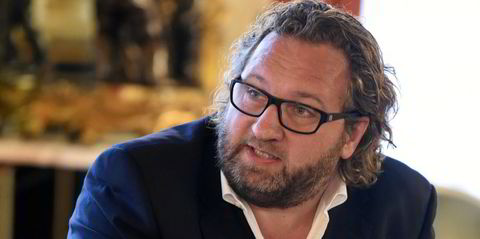As one of Carnival Corp’s largest cruise ships prepared to depart PortMiami for another Caribbean voyage, an LNG bunker vessel delivered fuel as crew worked to sort waste in the recycling centre and uneaten food churned in a biodigester in the galley.
Within clear sight of the ship’s captain and chief engineer, an LR OneOcean screen displays changes in environmental regulations along the planned voyage, while in the vast machinery space, wastewater treatment systems tackle the sewage of a ship that can carry 6,500 passengers and more than 1,700 crew members.
The bustle of activity is just a small sample of how the 5,200-lower-berth Carnival Celebration (built 2022), the biggest ship in the Carnival Cruise Line fleet, fits into the sustainability strategy at the world’s largest cruise ship operator.

Chief maritime officer William Burke, one of several key Carnival executives who gave TradeWinds a tour of the ship’s environmental features in Miami, said that climate action and circular economy are the most important elements of the six pillars of that strategy.
On the climate goal, he said LNG plays a large role. Alongside efficiency efforts, Burke said the fuel has helped Carnival cut its greenhouse gas footprint by 10% since a 2011 peak while increasing capacity by 30%.
“We’ve gotten a heck of a lot more efficient over time,” he said while on the Carnival Celebration’s bridge. “And that’s starting to translate into real change from an absolute greenhouse gas perspective.”
He said the company is on track to achieve a 40% carbon intensity reduction by 2026, an International Maritime Organization goal for 2030, it has significantly reduced particulate emissions and it has most of its ships geared up to connect to shore power.
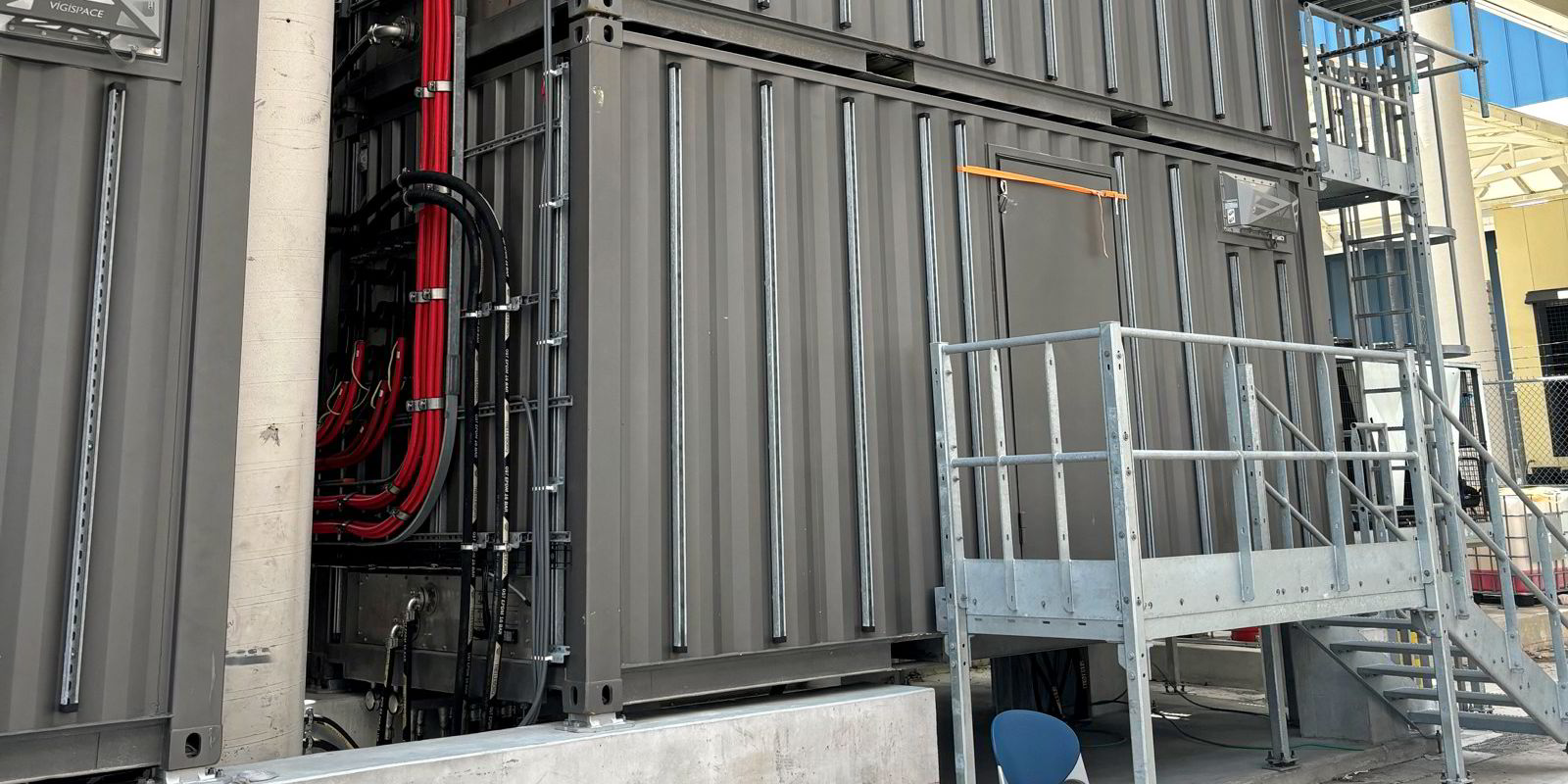
On the circular economy, he said Carnival has a goal of having 75% of its ships with advanced wastewater treatment systems by 2030, but it is also headed for hitting that target four years early.
He said the waste reduction, treatment and recycling efforts are not driven by regulation alone.
“The regulatory goal for sewage is much, much less than what we’re doing,” he said, noting that bilge and ballast water measures are on par with regulations. “The food waste in the digesters and the single-use plastics: there’s nothing around that that is a requirement, other than you can’t discharge food waste at sea.”
Carnival’s sustainability strategy is not for everyone. Environmental groups particularly take aim at its reliance on LNG, as its main ingredient is methane and is more potent as a greenhouse gas than CO2 when it leaks out of ships’ engines or the upstream supply chain.
But the cruise giant has clearly come a long way since 2016, when Carnival’s Princess Cruises subsidiary pleaded guilty and agreed to a $40m fine for dumping oil-contaminated waste from a ship and then covering it up.
The conviction the next year included a five-year period of probation that put Carnival’s company-wide environmental compliance system under close monitoring, which followed a similar probation that started in 2002.
Shore power
As the Carnival Celebration was docked at PortMiami, container-based shore power systems were delivering energy for the vessel.
Carnival Corp has already reached its 2030 goal of outfitting 60% of its fleet with shore power. In its latest sustainability report, the company said it had 64% coverage at the end of 2023.
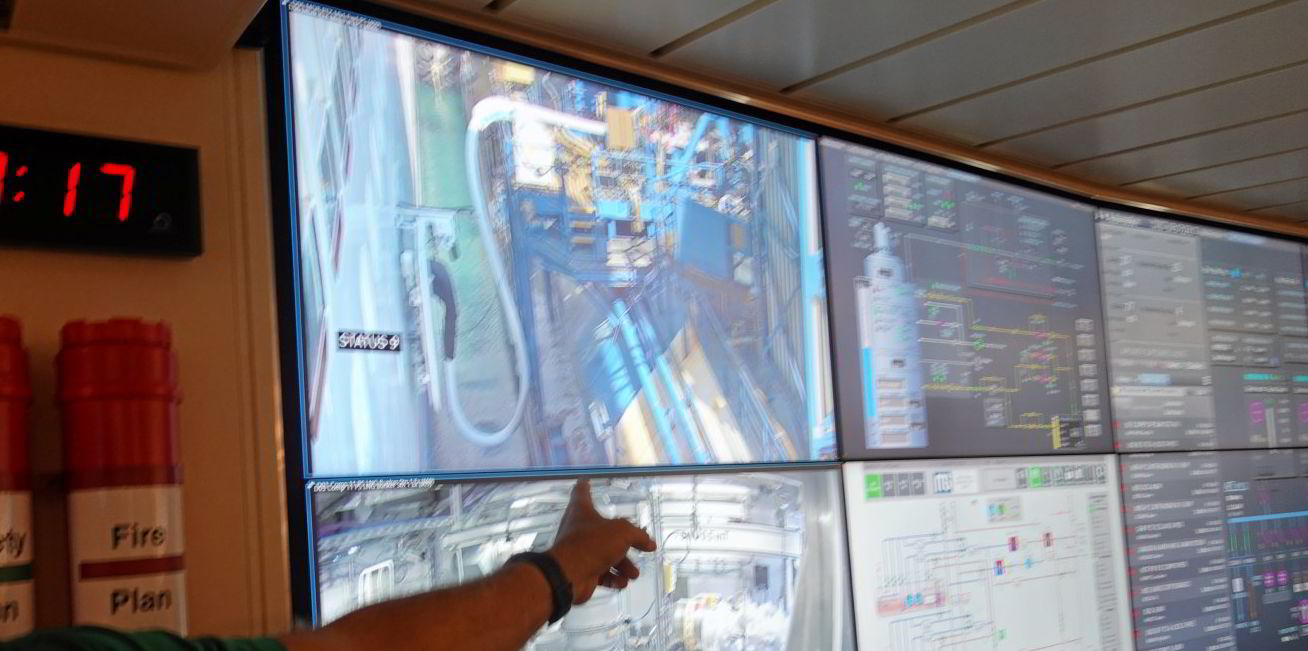
Richard Pruitt, vice president of environmental operations for flagship brand Carnival Cruise Line, said that the company is committed to deploying ships with shore power capabilities wherever ports can provide it.
But in the region where the Carnival Celebration trades — the major destination market of the Bahamas and the Caribbean — that is not an option outside Florida’s ports.
He said for utilities on island nations in the region, providing shore power to cruise ships is difficult, given their episodic needs. And if those utilities are burning diesel fuel to produce electricity, the environmental benefit is erased.
“You have to remember, shore power is only as good as the source power,” Pruitt said.
LNG fuelling

On the opposite side of the Carnival Celebration, the tug Q Ocean Service and its LNG barge were delivering 1,100 cubic metres of the fuel, an operation it carries out every Sunday.
As they toured the ship, Carnival executives expressed frustration with the backlash that LNG has faced.
They acknowledged that LNG is not perfect, but they argued that there is a lack of greener alternatives at scale, with limited supply of biological feedstocks and renewable electricity supply to provide the industry with all the green fuels that would be needed to meet its decarbonisation goals.
Speaking on the bridge of the Celebration, Burke said that for shipping, LNG is the best fuel out there.

“It’s better than the heavy fuels or the marine gas oil that we that we typically use, because it’s got a better greenhouse gas footprint,” Burke said.
Tom Strang, senior vice president of maritime affairs at Carnival Corp, explained that the company has been seeing significant improvement in engine technology since the first LNG-fuelled cruise ship arrived in 2018.
“Methane slip can be solved. We know how to solve mehane slip now,” he said in the engine control room of the Carnival Celebration.
He said that when Carnival first adopted LNG as a fuel, the focus was not on greenhouse gas emissions but on nitrogen oxides, sulphur and particulate matter pollution.
| Goal | Progress in 2023 |
| Achieve 20% greenhouse gas intensity reduction relative to 2019 baseline | Achieved 14% reduction |
| Increase fleet shore power connection capability to 60% of the fleet | Achieved 64% of fleet coverage |
| Expand LNG | Nine in the water as of 4 December, with three on order |
| Achieve 50% single-use plastic item reduction in 2021 | Removed hundreds of millions of single-use plastic items from the fleet |
| Increase advanced wastewater treatment system coverage to more 75% of fleet capacity | Achieved 70% coverage of fleet capacity and 70% of ships |
| Achieve 30% unit food waste reduction by 2022, 40% by 2025 and 50% by 2030 | 38% unit food waste reduction in 2023 |
“We’ve always known there was an issue with methane slip, but we never realised it was going to be as provocative, as concerning to some of the NGO community,” he said, referring to non-governmental organisations.
He said now the company is working on efforts to measure methane slip and then tackle it. On one of Carnival’s ships, for example, a trial is underway that will measure the impact of using a catalyst to remove methane from the ship’s exhaust.
OneOcean
Prominently displayed for chief engineer Fabien Gervaise and his team in the engine control room, and for captain Vincenzo Alcaras and his bridge officers, are computer screens that show the changing regulatory requirements that the Carnival Celebration will encounter on its voyage.
These are the LR OneOcean EnviroManager software platform, developed by the cruise giant and classification society Lloyd’s Register. Carnival Corp recently announced that the platform has now been fully deployed across the fleet.
Seeing the regulatory landscape in real-time allows for better decision-making.
“It helps the officers to not make mistakes,” Alcaras told TradeWinds on the bridge of the Carnival Celebration.
“We are all human beings. We all make mistakes, and sometimes this happens when we don’t have the right tools. This is a great tool because it gives to the officers in real time where they are, what they can do and what they cannot do.”
Energy efficiency and water production
Key to Carnival’s decarbonisation strategy is energy efficiency, with a programme of what it calls service power packages that are being rolled out across the fleet.
Within the vast machinery space and engine room of the Carnival Celebration, hundreds of inverters contribute to energy efficiency by, for example, allowing pumps to operate on variable speeds.
“When you do that hundreds of times across the ship, not just on pumps, but on fans, it’s tremendous savings,” said Burke.
This and other elements of the service power package, which includes HVAC upgrades and LED lighting, could lead to 5% fuel efficiency savings across the fleet, he said.
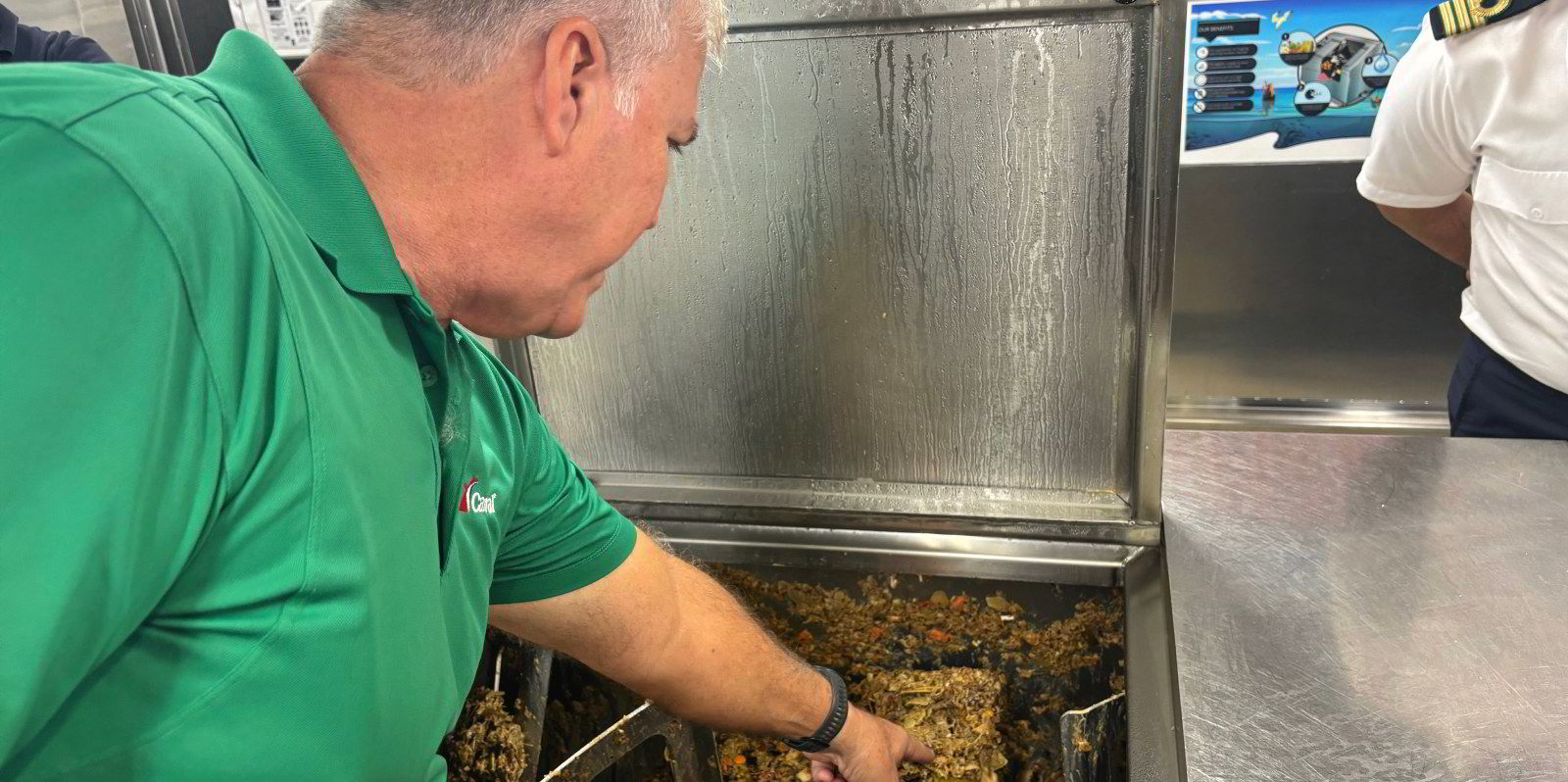
Pruitt pointed to heat exchangers and vacuum steam evaporators that tackle the ship’s waste heat and more.
The evaporators and reverse osmosis equipment are also used to make potable water for showers, the galley and laundry, keeping the ship’s water supply self-sufficient while sailing.
“We don’t bunker water anywhere. We make our own,” he said, noting that the systems use 4,000 tonnes per day of water. “And that’s important. We’re in islands where water scarcity is a problem.”
Among other waste heat equipment, steam turbine generators can produce clean electricity.
“We want to get every kilowatt of power out of the fuel that we burn,” Pruitt said.
Waste heat recovery can deliver 10% to 20% energy savings, he estimated.
For Burke, doing more to utilise waste heat represents the next key phase of Carnival Corp’s energy efficiency efforts.
“What we now can do is take heat out of almost anything, and make energy out of it,” he said. “That minimises the amount we need to generate.”
Wastewater
In another corner of the ship’s humming machinery space, Pruitt showed a chain of treatment equipment that takes sewage and other wastewater and turns it into water that can be safely discharged at sea.
The equipment includes a bioreactor where bacteria consume the organic matter.

“I just saw the acceptance testing,” Pr uitt said. “The Celebration basically took their sewage and their grey water and turned it into water that is better than almost any municipality in the country.”
Carnival Corp has installed the systems on 70% of its fleet.
Food management
Among Carnival’s sustainability goals is tackling food waste, which the cruise giant wants to cut food waste by 50% in 2030, and the company reached a 38% reduction in 2023.
Burke said the efforts include training crew members to prepare food in a way that reduces waste. And to slash the amount of leftover food on guests’ tables, the company eliminated trays, meaning passengers must carry individual plates, making it less likely that they will take more than they can eat.
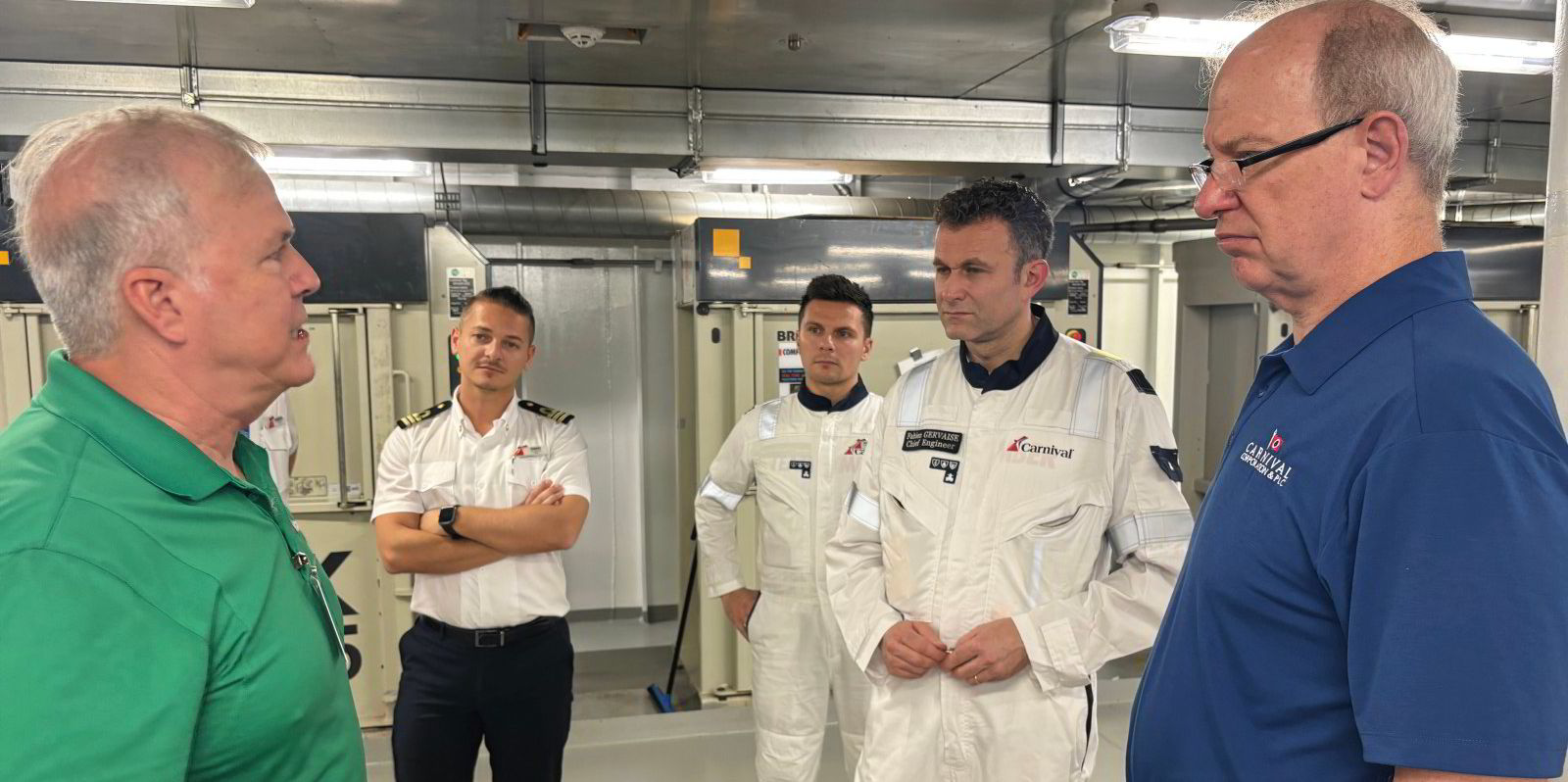
“If they avoid taking it in the first place, then there’s less likelihood of going to be wasted,” he said.
In the galley, a pinging noise could be heard every few seconds from a machine under a counter. Pruitt opened the ship’s biodigester, one of 600 that Carnival has installed in its fleet to organically decompose leftover food.
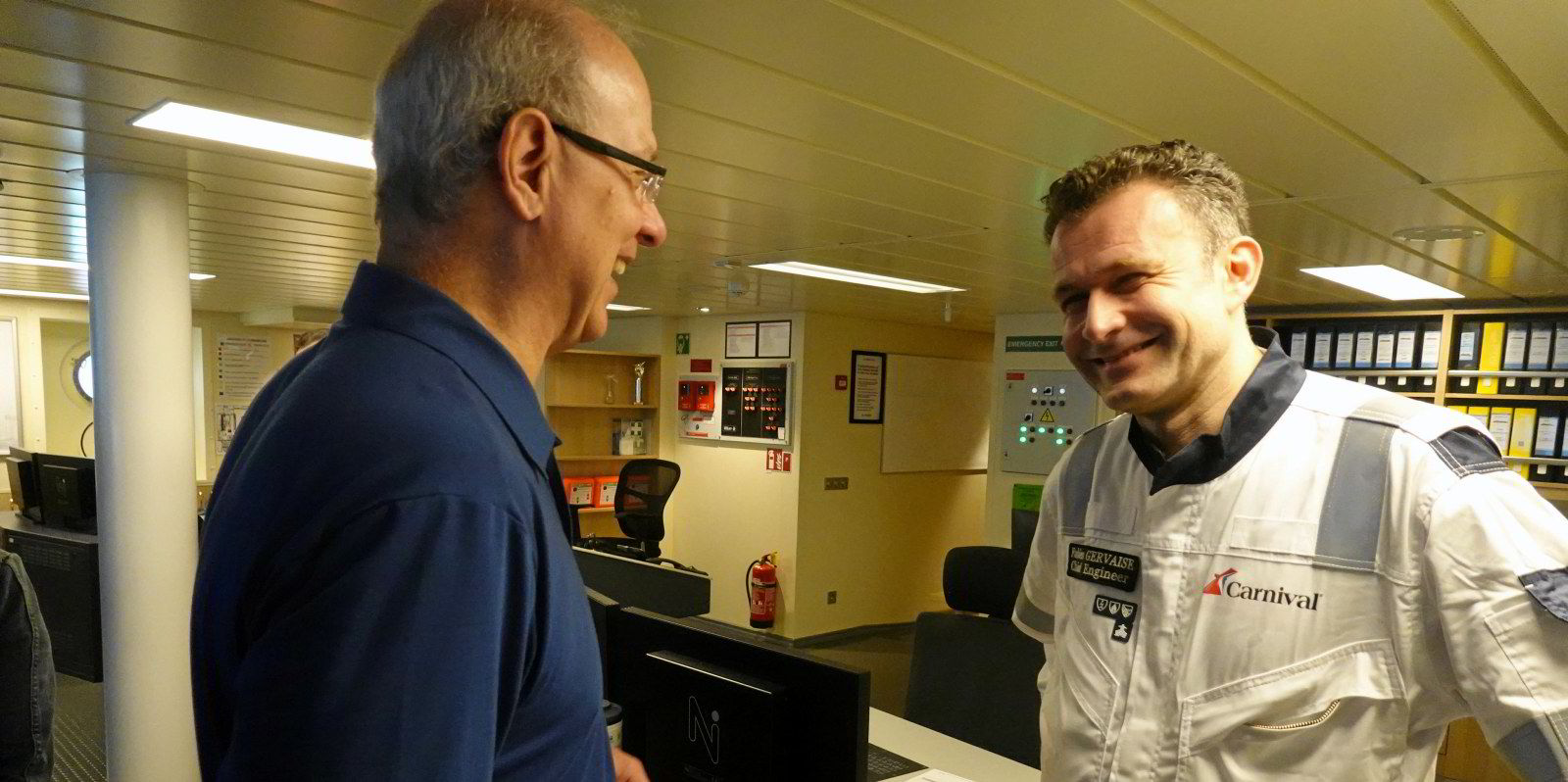
Pruitt said that the biodigesters originally used plastic media — the objects in the churning digester where the bacteria that consume live. But the tapping sound on this day was not plastic but peach pits, which the ships now use as alternative media.
“So we have purchased tractor-trailers full of peach pits in cans,” he said.
Corporate culture
As Carnival was concluding its probation in April 2022, US Justice Department senior litigation counsel Richard Udell sought to remind the company in a court hearing that many of the environmental practices the company was taking credit for emerged out of the conviction and subsequent monitoring programme.
The prosecutor praised the judge overseeing the case for focusing on corporate culture throughout the case, and he said then-chief executive Arnold Donald’s recognition that the company’s culture needed to change was a “big deal”.
Officers onboard the Carnival Celebration have noticed that change.
Irfan Bate, the senior environmental officer on the ship, works to ensure crew members throughout the vessel are aware of compliance matters, and he said every crew member is trained on how they can reduce their environmental footprint.
“Being in probation the last time was an opportunity for us,” he said. “We took it as an opportunity to improve rather than looking at it as if we are being penalised or punished.”
Now, he said, Carnival crew members are working to standards that are above and beyond environmental regulations.
Alcaras, who has worked on Carnival ships for 27 years, said the corporate culture has changed 300% since he became a captain 18 years ago.
“We changed a lot. We grew up,” he said, describing a supportive training environment in which officers grow within the company. “The mentality has changed.”
